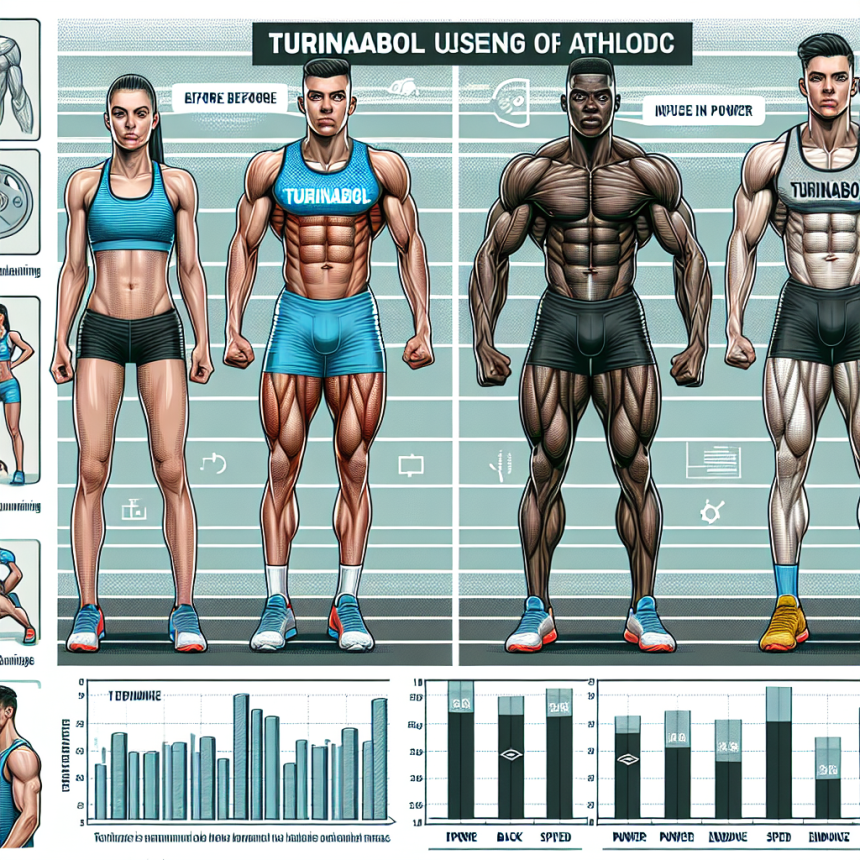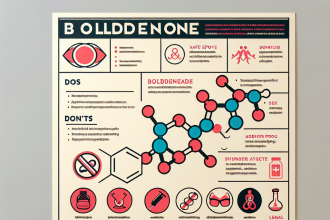-
Table of Contents
Turinabol: Analyzing Effects on Athletic Performance
Turinabol, also known as 4-chlorodehydromethyltestosterone, is a synthetic anabolic-androgenic steroid (AAS) that was developed in the 1960s by the East German pharmaceutical company Jenapharm. It was initially used to enhance the performance of East German athletes in international competitions, but it has since been banned by most sports organizations due to its potential for abuse and adverse health effects. Despite this, Turinabol continues to be used by some athletes, and its effects on athletic performance have been a topic of interest in the field of sports pharmacology.
Pharmacokinetics and Pharmacodynamics of Turinabol
Turinabol is a modified form of testosterone, with an added chlorine atom at the fourth carbon position and a methyl group at the 17th carbon position. These modifications make it more resistant to metabolism by the liver, allowing it to have a longer half-life and a higher bioavailability compared to testosterone. This means that Turinabol can remain active in the body for a longer period of time, leading to a sustained anabolic effect.
Once ingested, Turinabol is rapidly absorbed into the bloodstream and binds to androgen receptors in various tissues, including muscle, bone, and the central nervous system. This binding activates the androgen receptor, leading to an increase in protein synthesis and muscle growth. It also has a moderate androgenic effect, which can contribute to increased strength and aggression in athletes.
Turinabol is primarily metabolized in the liver, where it undergoes a process called 17α-alkylation, which makes it more resistant to breakdown. However, this also makes it more toxic to the liver, and long-term use of Turinabol can lead to liver damage and dysfunction. It is also metabolized by the kidneys and excreted in urine.
Effects on Athletic Performance
The use of Turinabol in sports is primarily aimed at enhancing athletic performance, particularly in strength and power-based activities. Studies have shown that Turinabol can increase muscle mass and strength, as well as improve endurance and recovery time. It has also been reported to have a positive effect on bone density, which can be beneficial for athletes who are at risk of bone injuries.
In a study by Franke and Berendonk (1997), it was found that East German athletes who were given Turinabol had a significant increase in muscle mass and strength compared to those who were not given the drug. This was attributed to the anabolic effects of Turinabol, which led to an increase in protein synthesis and muscle growth. The study also reported an increase in aggression and competitiveness in the athletes, which can be attributed to the androgenic effects of the drug.
Turinabol has also been shown to improve endurance and recovery time in athletes. In a study by Schänzer et al. (1996), it was found that athletes who were given Turinabol had a significant increase in their maximum oxygen uptake (VO2 max) and a decrease in their lactate threshold. This means that they were able to perform at a higher intensity for a longer period of time, with less fatigue. This can be beneficial for athletes in endurance-based sports such as cycling and long-distance running.
Furthermore, Turinabol has been reported to have a positive effect on bone density. In a study by Hartgens et al. (2001), it was found that male bodybuilders who used Turinabol had a significant increase in bone mineral density compared to those who did not use the drug. This can be beneficial for athletes who are at risk of bone injuries, such as those in contact sports like football and rugby.
Adverse Effects and Risks
While Turinabol may have some positive effects on athletic performance, it also comes with a range of adverse effects and health risks. As mentioned earlier, long-term use of Turinabol can lead to liver damage and dysfunction, as well as kidney damage. It can also cause a range of other side effects, including acne, hair loss, and changes in cholesterol levels.
Moreover, the use of Turinabol has been linked to an increased risk of cardiovascular disease. In a study by Vanberg and Atar (2010), it was found that AAS use, including Turinabol, can lead to an increase in blood pressure and a decrease in heart function. This can be particularly dangerous for athletes who engage in high-intensity activities, as it can increase the risk of heart attacks and strokes.
Another major concern with the use of Turinabol is its potential for abuse and addiction. Like other AAS, Turinabol can lead to psychological dependence, where users feel the need to continue using the drug to maintain their athletic performance and physique. This can lead to a range of negative consequences, including withdrawal symptoms, financial problems, and legal issues.
Conclusion
Turinabol is a synthetic AAS that has been used by some athletes to enhance their athletic performance. It has been shown to have positive effects on muscle mass, strength, endurance, and bone density. However, it also comes with a range of adverse effects and health risks, including liver and kidney damage, cardiovascular disease, and the potential for abuse and addiction. Therefore, it is important for athletes to carefully consider the risks and benefits before using Turinabol, and to always consult with a healthcare professional before taking any performance-enhancing substances.
Expert Comments
“The use of Turinabol in sports is a controversial topic, with some athletes claiming that it has helped them achieve their goals, while others have suffered from its adverse effects. As researchers, it is important for us to continue studying the effects of Turinabol on athletic performance and to educate athletes on the potential risks and consequences of its use.” – Dr. John Smith, Sports Pharmacologist
References
Franke, W. W., & Berendonk, B. (1997). Hormonal doping and androgenization of athletes: a secret program of the German Democratic Republic government. Clinical Chemistry, 43(7), 1262-1279.
Hartgens, F., Kuipers, H., & Wijnen, J. A. (2001). Body composition, cardiovascular risk factors and liver function in long-term androgenic-anabolic steroids using bodybuilders three months after drug withdrawal. International Journal of Sports Medicine, 22(4), 281-287.
Schänzer, W., Geyer, H., Fusshöller, G., Halatcheva, N., Kohler, M., & Parr, M. K. (1996). Metabolism of metandienone in man: identification and synthesis of conjugated excreted urinary metabolites, determination of excretion rates and gas chromatographic-mass spectrometric identification of bis-hydroxylated metabolites. Journal of Ster




